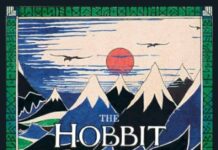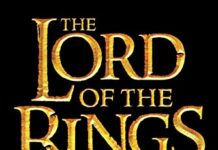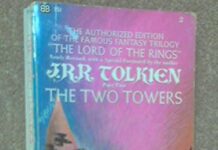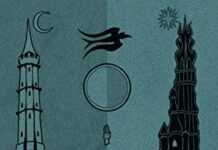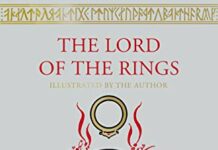
Ebook Info
- Published: 2008
- Number of pages: 380 pages
- Format: PDF
- File Size: 1.39 MB
- Authors: J.R.R. Tolkien
Description
In his acclaimed collection Tales Before Tolkien, Douglas A. Anderson illuminated the sources, inspirations, and influences that fired J.R.R. Tolkien’s genius. Now Anderson turns his attention to Tolkien’s colleague and friend C. S. Lewis, whose influence on modern fantasy, through his beloved Narnia books, is second only to Tolkien’s own. In many ways, Lewis’s influence has been even wider than Tolkien’s. For in addition to the Narnia series, Lewis wrote groundbreaking works of science fiction, urban fantasy, and religious allegory, and he came to be regarded as among the most important Christian writers of the twentieth century. It will come as no surprise, then, that such a wide-ranging talent drew inspiration from a variety of sources. Here are twenty of the tributaries that fed Lewis’s unique talent, among them: “The Wood That Time Forgot: The Enchanted Wood,” taken from a never-before-published fantasy by Lewis’s biographer and friend, Roger Lancelyn Green, that directly inspired The Lion, the Witch, and the Wardrobe; E. Nesbit’s charming “The Aunt and Amabel,” in which a young girl enters another world by means of a wardrobe; “The Snow Queen,” by Hans Christian Andersen, featuring the abduction of a young boy by a woman as cruel as she is beautiful; and many more, including works by Charles Dickens, Kenneth Grahame, G. K. Chesterton, and George MacDonald, of whom Lewis would write, “I have never concealed the fact that I regarded him as my master.” Full of fascinating insights into Lewis’s life and fiction, Tales Before Narnia is the kind of book that will be treasured by children and adults alike and passed down lovingly from generation to generation. INCLUDING SEVENTEEN MORE WORKS BY THE PROGENITORS OF MODERN FANTASY AND SCIENCE FICTION:“Tegnér’s Drapa” by Henry Wadsworth Longfellow “The Magic Mirror” by George MacDonald “Undine” by Friedrich de la Motte Fouqué “Letters from Hell: Letter III” by Valdemar Thisted “Fastosus and Avaro” by John Macgowan “The Tapestried Chamber; or, The Lady in the Sacque” by Sir Walter Scott “The Story of the Goblins Who Stole a Sexton” by Charles Dickens “The Child and the Giant” by Owen Barfield “A King’s Lesson” by William Morris “The Waif Woman: A Cue—From a Saga” by Robert Louis Stevenson “First Whisper of The Wind in the Willows” by Kenneth Grahame “The Wish House” by Rudyard Kipling “Et in Sempiternum Pereant” by Charles Williams “The Dragon’s Visit” by J.R.R. Tolkien “The Coloured Lands” by G. K. Chesterton “The Man Who Lived Backwards” by Charles F. Hall “The Dream Dust Factory” by William Lindsay Gresham
User’s Reviews
Reviews from Amazon users which were colected at the time this book was published on the website:
⭐This is a wonderful collection of early science fiction. My favorites were “The Child and the Giant” by Owen Barfield, “The Coloured Lands” by G K Chesterton, and “The Man Who Lived Backwards” by Charles F Hall. I would love to have more to read by Hall, but it seems he disappeared.
⭐What a great find. Read the introduction of the Great Divorce and CS Lewis mentions a story he read in a scientifiction magazine that played a part in his story. Unfortunately, he couldn’t remember the periodical or author. Wouldn’t he be amazed by the quick web search, find and immediate purchase of this book? I went from reading his words, to finding the source he himself couldn’t identify in a matter of minutes. Anyway, a great collection of stories in their own right. Even more special to be able to put Lewis’ writing in the context of his time.
⭐This had more damage than what was reported.
⭐Tales Before Narnia. Edited by Douglas A. Anderson. Del Rey: Ballantine. (2008) 339 pages. $15.00Reviewed by Ryder W. MillerDue to the recent J.R.R. Tolkien and C.S. Lewis movies there has been a voluminous amount of new public C.S. Lewis scholarship available, as if there had not been enough at the library and in the journals already. Walter Hooper has made three large volumes of C.S. Lewis letters available. From Narnia to Space Odyssey, by myself, argues that C.S. Lewis was inspired by a dialogue with Arthur C. Clarke sending him in a new direction (reread the forward to That Hideous Strength, ie. the scientific colleague referred to may have been have been Clarke or a like minded colleague). Allan Jacobs points out in his biography that C.S. Lewis was also a Narnian. Michael Ward claims to have a discovered an astrological/astronomical underpinning to the Narnia series in the scholarly and intriguing Planet Narnia. In Narnia and the Fields of Arbol, The Environmental Visions of C.S. Lewis, Mathew T. Dickerson & David O’Hara argue that C.S. Lewis should be considered a modern and influential environmentalist based on his science fiction and fantasy books which almost everybody has encountered. Equally brilliant is Tales Before Narnia, The Roots of Modern Fantasy and Science Fiction which includes many classic stories and writers that inspired C.S. Lewis.Here one will find works by the likes of George McDonald and G.K. Chesterton who Lewis read avidly and apparently studied, emulated and served. There are also poems and stories by fellow Inklings J.R.R. Tolkien and Charles Williams, and lesser known Inklings such as Owen Barfield and others. One will be surprised by these stories that show that there was a rich fantastical legacy, not just a mythological legacy, before the Inklings. C.S. Lewis in some people’s opinions will be elevated to the position of someone who could reach the masses, for others he will be appear as not quite so original and like Tolkien, maybe even grubby, to put it kindly.But neither man was shy about sharing with their fans their literary debts.The included stories do not have the drive or adventurousness as Lewis’s Chronicles of Narnia, but they do work as parts of a jigsaw puzzle, Narnia and Lewis being the constructed image showing what Lewis had made public by his fame and success. The book also serves as revenge for the loyal or weird reader, against the know it alls and scholars, who also encountered Lewis along their vicarious adventurous travels. One could better say what else should have been in here or what was missing or why something was missing, but there is also a list of recommended writers at the end.Here one will find the continuity which Narnia was a part of, but these are not the type of stories that one will sit on the edge of their seats to read. Tolkien was called “cruelly suspenseful” by a critic, while Lewis was not known for writing stories merely to entertain. They both sought to fill a void that was missing, ie. fantastical stories for those who did not want to be “jailed” by the modern realism, but Lewis also turned to fantasy as a means to expound upon theological issues.One will find here all sorts of components to Lewis’s Chronicles (White Witches, magic wardrobes, magical beings, talking animals, kings, battles, magical woods, etc…. ), but not necessarily the continence of a theological argument. The lion, Aslan, is missing, but Lewis at times was also Aslan. In the minds of many Lewis elevated fantasy by infusing it with a coherent moral philosophy, others are detractors because they would have preferred to have just been entertained.Anderson, as with Tales Before Tolkien, does a fine job of showing that we were not quite as weird as we thought we were reading all those fantastical tales. Many well established writers contributed to this rich legacy of writing. There were many readers before us and there is a tradition of doing so. Because of Lewis and Tolkien we are even less weird then we were in times past.Because of Anderson, the loyal fantasy reader still has something to add to the discussion, some insights that were gained more enjoyably.
⭐The twenty-one short stories, poems, essays and other writings that make up this collection are considered by editor Douglas A. Anderson as the sub-title states The Roots of Modern Fantasy and Science Fiction. Though this reviewer has some doubts about that assertion, the entries are well written and entertaining from a who’s who of literature (Dickens, Tolkien, Grahame, Stevenson, Wells, Potter, Clarke and Kipling, etc) even though the authors were in many case key players (no novels are included which in my opinion would be more likely to be influential). The contributions are excellent with the little notes prefacing them adding to the fun as Mr. Anderson explains the author’s link to C.S. Lewis. The anthology provides a glimpse into the science fiction-fantasy short writings that were out there prior to Narnia, written in the early 1950s. As he did with the equally delightful TALES BEFORE TOLKIEN, Mr. Anderson provides a strong, enlightening and fun to read compilation; hard to resist “a never before published story” The Wood That Time Forgot: The Enchanted Wood by Roger Lancelyn Green (Lewis’ biographer) that inspired THE LION, THE WITCH, AND THE WARDROBE.Harriet Klausner
Keywords
Free Download Tales Before Narnia: The Roots of Modern Fantasy and Science Fiction in PDF format
Tales Before Narnia: The Roots of Modern Fantasy and Science Fiction PDF Free Download
Download Tales Before Narnia: The Roots of Modern Fantasy and Science Fiction 2008 PDF Free
Tales Before Narnia: The Roots of Modern Fantasy and Science Fiction 2008 PDF Free Download
Download Tales Before Narnia: The Roots of Modern Fantasy and Science Fiction PDF
Free Download Ebook Tales Before Narnia: The Roots of Modern Fantasy and Science Fiction
